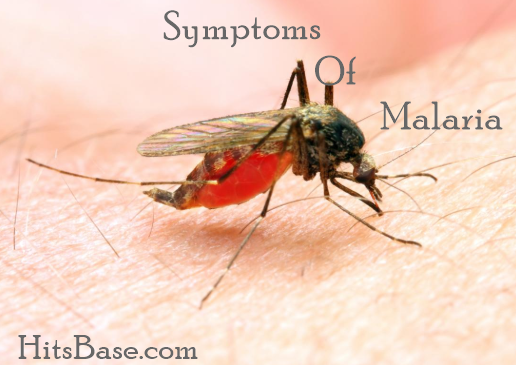Child Nutrition Feeding | Importance Of Childhood Nutrition
Child Nutrition Feeding | Importance Of Childhood Nutrition: Nutrition is a process of intake of food nutrients by organism necessary to support life. It is a provision of essential nutrients necessary for growth and development.
A child requires food to grow and maintain good health, the quality, and quantity; of food eaten by man have a lot of impact on his health. The growing child requires special nutrition to meet up the challenges arising from immaturity of the enzyme system and growth spurts. Failure to meet the child’s nutritional requirement at an early stage of life; will lead to poor physical and mental growth and thus low learning ability. Nutrition play vital roles in the growth and development of a child.
READ MORE: Human Evolution On Earth | Stages Of Evolution of Man
Balance Nutrition In A ChiLD.
Meanwhile, we will like to say something about Balance nutrition in a child; Balance nutrition is that which contains in the right amount the various; classes of food such as carbohydrates, protein, fats and oil, minerals, water, dietary fibers, and vitamins.
Carbohydrate is the main sources of energy for the body and found in cereals; root tubers such as yam. Cassava and milk.
Fats and oil serve as an energy reserve for the body, provision of warmth and protection of vital organs.
Proteins are required for growth and repair of damaged or worn out tissues. Common sources of protein include animal products such as milk, meat, eggs and many of them.
Mineral salts are micronutrients required for the normal functions of body organs. They are mostly found in the green vegetables and fruits.
Vitamins are necessary for digestion and absorption of food, proper functioning of vital organs such as the eye. Sources of vitamins are fruits and vegetables.
Water makes up about 70% of the human body mass. All the food nutrients are transported by water. It is necessary for excretion of waste from the body.
FOOD HYGIENE.
Food, if not well prepared, stored, and handle can be a source of potential poison for man. Therefore scrupulous hygiene should be employed by people in order; to reduce the incidence of diarrheal diseases in our environment.
Child Nutrition Feeding | Importance Of Childhood Nutrition
Requirements For Clean and Safe Feeding.
We are about to outline Some of the requirements for clean and safe feeding; The requirements are as follows.
1. Clean Hands: Always wash your hands with soap and clean water after using the toilet. And also after cleaning the baby’s bottom and after disposal of children’s stool. Before preparing or serving foods.
2. Clean Utensils: Always wash utensils before and after use. Keep utensils covered to prevent contamination by dust and insects.
3. Safe Storage: Keep foods in tightly covered containers. Avoid serving cold foods.
4. Safe Water: Boil and filter drinking water. Store water in clean covered containers.
Child Nutritional Options.
The nutritional option for the child varies from age to age. The following feeding options are however available.
1. Breast milk: The human breast provides a wholesome and ideal nutrition for an infant. It provides.
Complete nutrition for at least 4-6 months of life.
Half of the child’s nutritional needs for the age of 6-12 months.
Up the one-third of the child’s nutritional requirement from 12-24 months.
The mother can express her breast milk and store in a clean container to be used for feeding her child. Such expressed breast milk should be properly kept and only given to the child it is meant for. On no account should the expressed breast milk meant for a baby be used for another baby. This is very very necessary as certain infections; such as Human immunodeficiency virus can be transmitted through infected breast milk.
- 2. Artificial formula: This is another feeding option for a child who is not exclusively breastfed. These infant formulae if not properly reconstituted can cause constipation or undernutrition if over diluted.
3. Semi-solid food: This can be introduced from 4 months, although some mother may exclusively breastfeed; their babies for 6 months before the introduction of semi-solid foods. A good diet should consist of a mixture of cereals; animal’s products such as milk, fish, meat, eggs, and fruits.4. Solid foods: This should be introduced from 6 months of age. To help the young child to get enough nutrients the staple foods have to be; complemented with milk feeds and other micronutrients.
Feeding Techniques.
The child should be fed with a cup and spoon rather than using feeding bottles. This is because feeding bottles are more difficult to clean and are easily; contaminated with harmful germs leading to diarrhea diseases.
Effects Of Poor Nutrition On Child’s development.
- Growth retardation.
- Protein malnutrition (kwashiorkor).
- Protein-calorie malnutrition (marasmus)
- Increase in the incidence of diarrheal disease from poor food hygiene.
- Anemia (shortage of blood).
- Deficiency disease such as scurvy, night blindness, nutritional rickets.
- Poor mental development leading to the low intelligent quotient.
- Obesity from over nutrition.
CONCLUSION.
The development of a child’s natural endowment to a reasonable extent depends on; adequate and balanced nutrition hence Nature, nurture controversy. Poor food hygiene is a major cause of infant mortality. Therefore parents should apply basic hygiene in handling food. Also, foods served should be able to meet the child’s nutritional needs for optimal growth and development.








